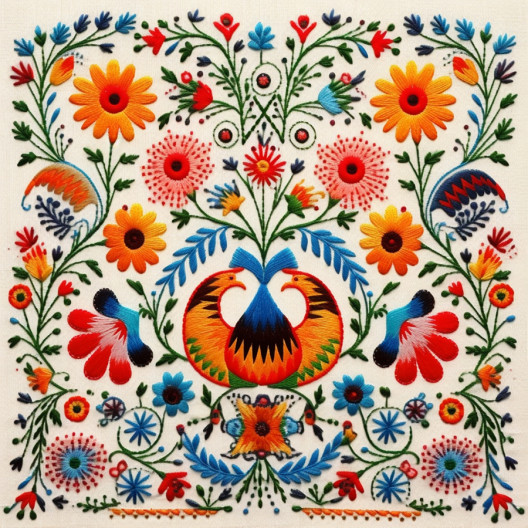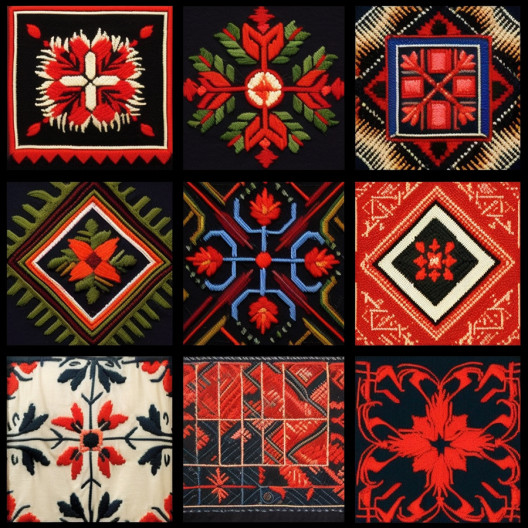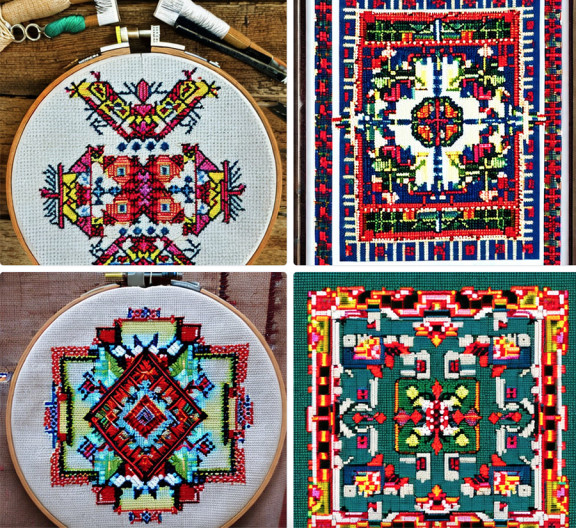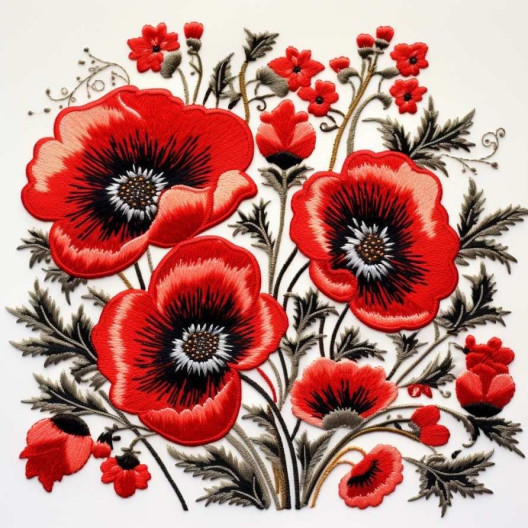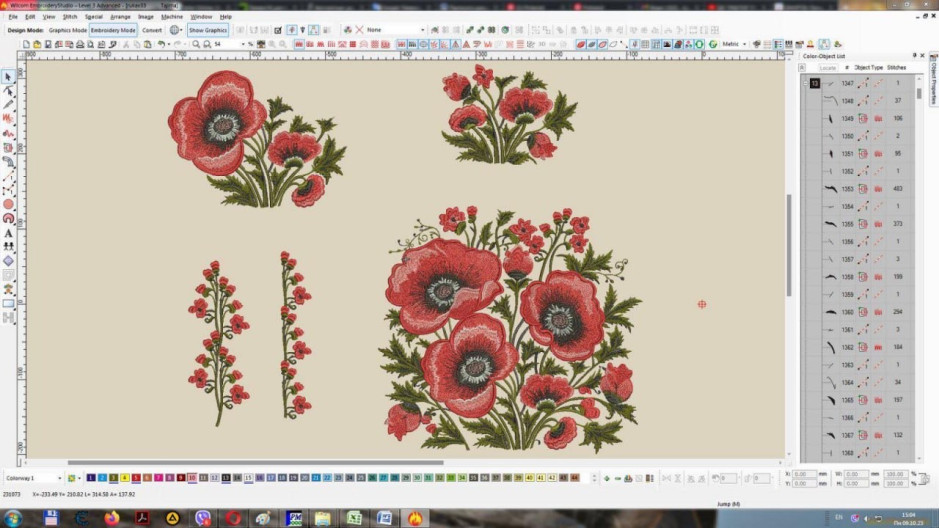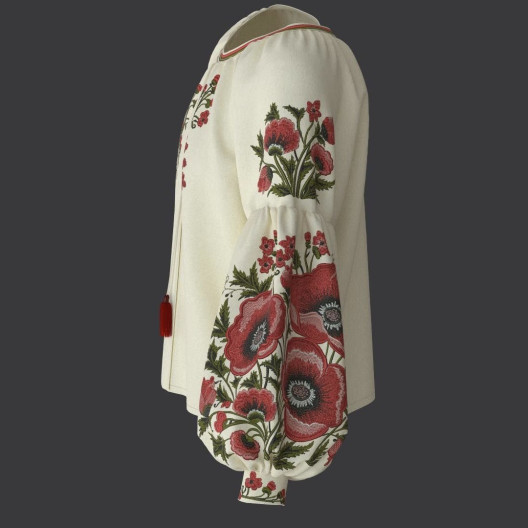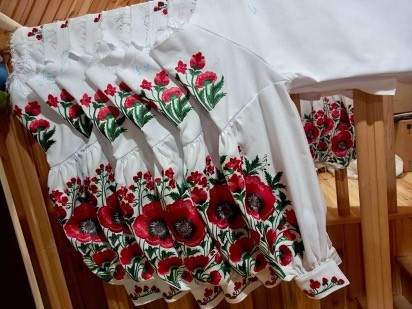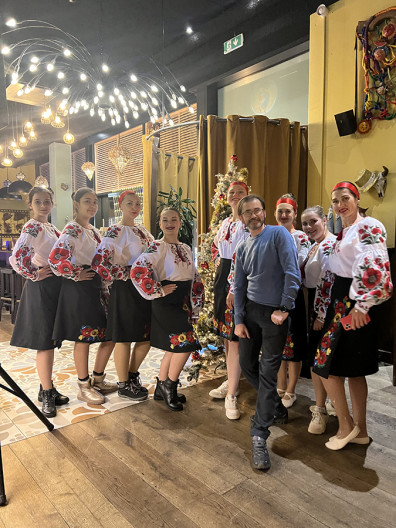The VYSH project uses various artificial intelligence technologies to create embroidery designs for the stage costumes of the Luxembourg dance group Berehyni, which popularizes historical Ukrainian dances. During the experiment, two different AI programs (Stable Diffusion and Midjourney) were used to test the possibilities of the technologies, the aesthetic results, and their applicability for a programmable embroidery machine.
Prehistory of the idea
A dance group led by Yurii Skobel from Ivano-Frankivsk in Luxembourg is composed of amateur and some professional female dancers who are mostly refugees from Ukraine after the full-scale invasion of Russia in Ukraine in February 2022. Their mission is to collect money for humanitarian projects that are supporting Ukrainians in Luxembourg and in Ukraine by performing at events with a crowdfunding concept. The costumes for the first performances in 2022 were borrowed in Ukraine and sent back after the performances.
Since the dance group is growing and is performing regularly, the question of own costumes was raised in spring 2023. Two dancers – C²DH-researchers Kateryna Zakharchuk and Inna Ganschow – decided to finance at least a part of the costumes with a “Thinkering” grant for digital experiments in history. The grant for this was provided by the C²DH director, Professor Andreas Fickers.
Expectations vs Reality
The initial experiment approach was to select historical embroidery patterns from each Ukrainian region, to ask the AI to merge the patterns of the regions to find a unified Ukrainian pattern, then to propose the variations for voting among dancers, designers, and historians and finally to compare the results, analyze the process, order the embroidered blouses, and write a paper.
The reality looked different, though, because the project participants envisioned different results they were striving for.
So Kateryna Zakharchuk researched different historical embroidery collections as templates, but the selection process of what to use for merging in order to create a new pattern was difficult. Here we had to discuss which collection is more authentic: the one which is older or the one which was newer but collected by the Ukrainian diaspora abroad and had less Soviet influences. Excluding the 20th century would mean to exclude the richest collection because it was better preserved through available media like photographs or videos.
When Inna Ganschow tested two graphical AI Stable Diffusion and Midjourney – both web-based software which can be used directly in a browser – Midjourney was favored because of its aesthetically more pleasing results than Stable Diffusion. But the idea of merging patterns from different Ukrainian regions to create a unified Ukrainian embroidery was not giving results which could be used as an embroidery pattern for the costumes.
One of the reasons was the dance costume tradition which needed to be considered according to the choreographer of the dance group “Berehyni,” Yuri Skobel. In the aesthetics of a stage blouse, there was not much space for historical authenticity, but rather the visual effect which makes the dancer well visible from a distance. So the prompts for the AI should be different and go towards decorative embroidery rather than historical or representative for many regions.
The final result
Once the first drafts were shown to the embroidery machine operator she suggested stopping asking for embroidery patterns but start to give prompts towards technical drawing schemes otherwise it won´t be recognized by the embroidery machine.
The prompts which were used can be organized into two groups: graphical and verbal. After deciding not to merge graphical patterns the team continued experimenting with the verbal prompts. The AI technology didn’t give expected results neither with human-generated prompts nor the ones which were suggested by another AI (ChatGPT). The biggest misunderstanding was to communicate with the AI like with a search engine giving it a list of keywords hoping that it will suggest the awaiting result.
The satisfying result came after a detailed describing a possible pattern so the AI could show what is already imagined by humans.
After the design was finalized it was sent to the LESIA embroidery company in Ukraine, integrated into a computer program named EmbroideryStudio to convert the pattern into a machine-recognizable scheme. The Thinkering grant allowed ordering 14 blouses which were presented at the C²DH Christmas Party with soloing Hanna Vechirko.




